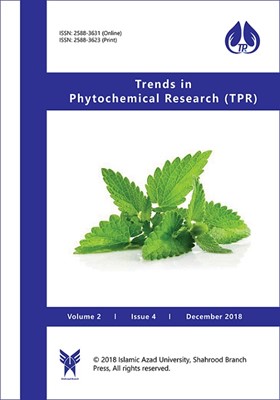-
-
List of Articles
-
Open Access Article
1 - Phytochemicals and phyto-extracts in cosmetics
Satyajit D. Sarker Lutfun Nahar -
Open Access Article
2 - Bioactive essential oils from the Cameroonian rain forest: A review - Part I
Jean Duplex Wansi Norbert Sewald Lutfun Nahar Claire Martin Satyajit Dey Sarker -
Open Access Article
3 - Chemical composition of Theobroma cacao L (Sterculiaceae) and Sorghum bicolor (L) Moench, Syn. Sorghum vulgare Pers (Poaceae)
Akinwunmi Olubunmi Adenike Olatunde Christian Olalekan -
Open Access Article
4 - Chemical constituents from the leaves of Fraxinus excelsior L., Senna sulfurea (Collad.) H. S. Irwin et Barneby and Prosopis cineraria (L.) Druce
Shahnaz Sultana Mohammed Ali Mohammad Jameel Piyush Sharma -
Open Access Article
5 - Analgesics from Lonchocarpus eriocalyx Harms
Angeline A. Ochung Phillip O. Owuor Lawrence A.O. Manguro Ishola O. Ismael Regina A. Nyunja Charles O. Ochieng Sylvia A. Opiyo -
Open Access Article
6 - Preliminary phytochemical analysis and in vitro antioxidant properties of Malaysian ‘Kundang’ (Bouea macrophylla Griffith)
Kumeshini Sukalingam -
Open Access Article
7 - Erratum: Nano-encapsulation of thyme essential oil in chitosan-Arabic gum system: Evaluation of its antioxidant and antimicrobial properties
Maryam Hasani Shirin Hasani
-
The rights to this website are owned by the Raimag Press Management System.
Copyright © 2021-2025







